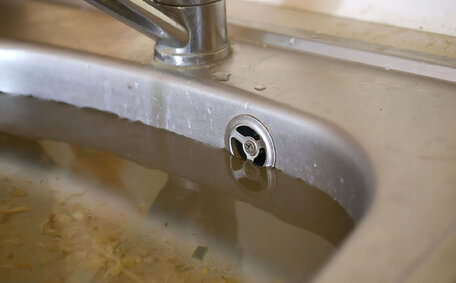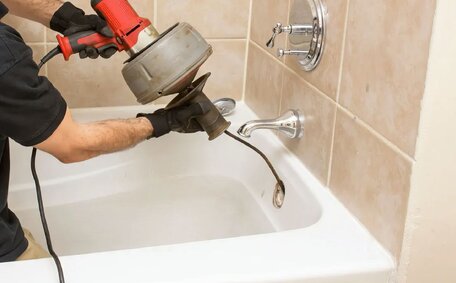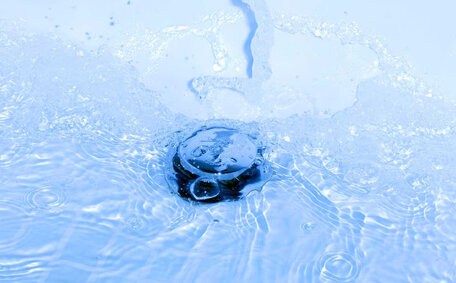Introduction to pets and drain issues
Pets enrich our lives but can inadvertently cause plumbing issues, such as clogged drains.
Pet hair, food scraps, and litter can enter sinks and pipes, creating significant blockages in your home’s drains.
This article outlines how pets can block drains and offers targeted plumbing advice for pet owners to prevent these issues.
- How pet hair fur, and feathers end up blocking pipes and drains
- The impact of pet-origin food waste and other items clogging drains
- Ways to manage bath time for pets to reduce drain clogs
- Installing drain strainers, screens, and enzyme cleaners to limit build-up
- Understanding the risks of flushing pet waste like kitty litter and adopting guidelines for safe disposal
Informed and proactive pet owners can protect their plumbing from blockages using these tips tailored to tackle challenges posed by pets. Preventive home measures can significantly cut the risk of expensive emergency plumbing services. Explore what causes blocked drains, intelligent solutions for pet owners, and the impacts on systems like septic tanks.
Common household pets that cause plumbing issues
Learn how to protect your drains from clogs caused by common household pets. Below are primary causes and foundational tips to prevent plumbing issues:
- Shed fur from dogs and cats can clog sinks and drains as it accumulates. Scraps of pet food and other substances can find their way into drains, contributing to blockages.
- Birds - Feathers, seed shells and cage debris frequently make their way into sinks and pipes when cleaning bird cages.
- Fish - Residual fish feed and other aquarium waste delving into pipes can decay, which can incite substantial obstructions.
- Rabbits and rodents - Their fur sheds a lot and often ends up going down the drain. Hay and bedding materials are known to be culprits causing blockage in plumbing, posing a risk to your home.
- Reptiles - Substances like leftover calcium powder and particulate substrates, as well as poop accidents, contribute to drain clogs.
Tidying up meticulously after your pet and learning to address blocked drains with catchers, strainers, and enzyme cleaners can significantly ease plumbing problems. Placing screens strategically to catch detritus can help prevent clogs before they escalate.
Where pet waste accumulates
Pet hair, surplus food, and other detritus have a propensity to accumulate, frequently migrating down drain pipes and prompting obstructions:
- Kitchen sink Leftover pet food and fur washed from dishes can cause sink issues.
- Bathroom sinks/tubs - Excess hair and fur, or a combination of both, gets washed away during bath time and gathers in bathroom pipes.
- Toilets - Mistakenly disposing of pet waste down toilet channels leads to disagreeable clogs as time passes.
- Outdoor areas - Faeces in the yard that gets washed into street gutters and ultimately the local water system contributes to blockages.
Knowing where pet waste accumulates guides owners towards careful disposal and preventive measures. Catching debris early is key to protecting your sewer system from deep within your home clear of blockages.
Preventing pet-related drain problems
Taking certain actions can prevent blockage-causing materials from affecting your plumbing:
- Regularly brush and groom your dogs outdoors or in an area away from sinks to manage dog hair and prevent it from entering and clogs your drain. This strategic action limits the volume of shed hair, preventing potential clogs from dog and cat fur.
- Contemplate bathing pets outdoors with a portable tub during bath time to keep shed hair and fur from going down your sink. Alternatively, use a mesh guard to protect your pipes during indoor pet cleaning.
- Don’t let your pet’s hair and fur into the pipes by installing permanent drain strainer setups, screens, and catchers in problem areas like sinks.
- Avoid feeding pets directly over drains or sinks, and be cautious of disposing cooking oil down the drain. Timely tips help you avoid common mistakes. Promptly remove coffee grounds, tea leaves, and leftover pet food left over drain or eating areas to deter drain issues.
- It’s crucial to utilise practices that can keep drains clear, avoiding waste toilet paper and pet waste washed down the drain, and keeping your toilet lid closed to avoid complications. Instead, pick up all pet waste immediately and dispose of it in the general rubbish bin.
- Maintain a monthly routine to clean your drains with enzymatic cleaners to prevent build up of organic matter like hair and food particles in pipes.
- Make sure to check sinks, shower drains and outdoor drain grates regularly for debris build-up indicating potential pipe blockages before they worsen.
Recognising how to deal with blocked pipes through meticulous control of your pet’s hair, employing drain screens, and apt faeces disposal helps avert expensive emergency drain unclogging tasks in the future.
Identifying existing drain clogs
Multiple signs blocked drain, such as fluctuating water pressure or unusual odours, could point to an issue with pet remnants and general waste in your pipes:
- Water draining very slowly from sinks, tubs or showers
- Gurgling sounds coming from pipes when water drains
- Unpleasant sewage odours arising from drains
- Your toilet backing up or overflowing
- Pools of water gathering around floor drains
- Wet spots appearing in and around pipes your property caused by leakage or blockages
Start your inspection by looking for pet fur, hair, and food debris in sink overflows and drains. Use a flashlight to inspect carefully and see how clear blocked drain pathways and pipes are. Confirm clogs by attempting to flush toilets or run water into several drains at once while checking for sluggish flow.
Homeowners uncertain about resolving a critical how deal blocked drains problem should reach out to a blocked drain plumber to accurately diagnose the obstruction using CCTV camera scrutiny and hydro jetting. This examination will determine how much of the blockage needs repair.
Cleaning pet hair clogs
Pet hair, notorious for tangling and matting together further down in pipes, can form clogs leading to significant plumbing issues. After you wash your dog and contend with shedding cats, it helps to manually remove any remaining excess fur in the bath or shower with rubber gloves before it goes into your drainage system.
Such measures you can use in tackling constrictions that invade your drains.
To tackle pet fur clogs, pour a mix of hot water and baking soda down the drain, wait for 5 minutes and then rinse thoroughly.
Repeat weekly.
Alternatively, mix equal parts of vinegar and very hot water, pour down the drain, let it sit for 15 minutes, and then flush with more hot water. The acidic vinegar helps break down soap scum, fats and hair obstructions.
Specialised enzyme drain cleaner products available from supermarkets and hardware stores are also very effective at dissolving pet fur and hair over time. Simply follow product instructions. The enzymes break down hair and other substances, providing a safer alternative to harsh chemical cleaners.
For severe pet hair clogs causing blockage your pipes that require mechanical removal, contact a professional plumber. With a drainage camera, they can accurately identify and clear embedded clumps of hair using specialised hydro jet or electric eel equipment.
When to call a professional plumber
Understanding how to get rid of blocked pipes is essential, as persistent or severe obstructions often require professional help. In the following scenarios, contacting a licensed plumber is advisable:
- Blockages that persist after using a drain snake, plungers, home remedies, and enzyme cleaners
- Foul sewage odours arising from multiple drains
- Backed up sewer lines causing gurgling sounds or wet areas in the yard
- Pet hair extracted from drains that continues returning
- Multiple sinks/drains clogging frequently
- Observing bite marks, cracks, or leaks on exposed pipes
- Worries regarding tree root intrusions damaging underground drainage pipes
DIY attempts to clean buried drainage pipes can risk additional damage. Gold Coast professionals like Hornsby Plumbing use high-pressure hydro jetting to clean pipes without needing to excavate. We use CCTV cameras to inspect drain lines and identify any breaks or intrusive tree roots necessitating repair.
Pets drinking from contaminated toilet bowls can ingest harmful bacteria from blocked drains, leading to illness. Promptly resolving clogs with a plumber’s help can prevent significant health risks, in line with health department recommendations.
For household hygiene and peace of mind, Hornsby Plumbing suggests that pet owners schedule yearly drain checks and maintenance. For professional plumbing services, contact Hornsby Plumbing at 1300 349 338 or email [email protected].






